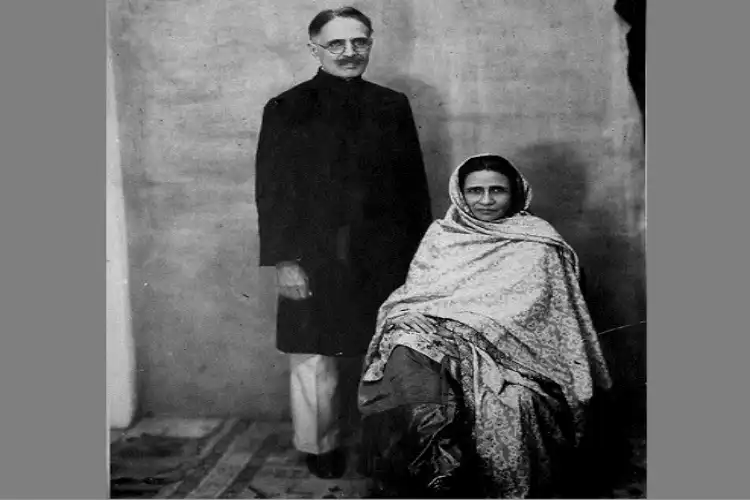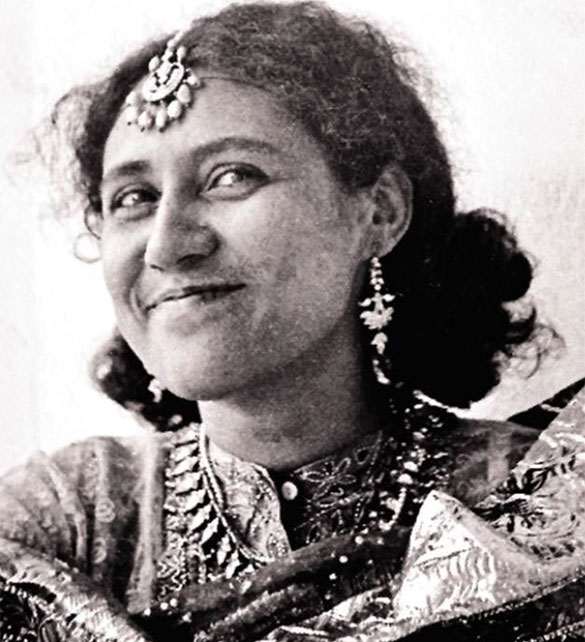
 Saquib Salim
Saquib Salim
On February 2, 1902, a 27-year-old Kashmiri lawyer from Aligarh, Sheikh Abdullah, was getting married to Begum Waheed Jahan, daughter of Mirza Ibrahim Beg, in Delhi. The wedding ceremony, attended by several leading Muslim men of the time, would turn out to be an important event in the history of women's education in India. The bridegroom, who hailed from Poonch, was one of the prominent leaders of the Aligarh Movement started by Sir Syed Ahmad Khan. He represented a band of young men who did not accept Sir Syed’s ideas fully since they claimed to have a far more progressive outlook. The bride, a sister of one of Abdullah’s friends, came from one of the few Muslim families of the time where daughters were allowed to get educated. The match was destined to bring a revolution among the Indian Muslims.
Sir Syed had started the Aligarh Movement campaign to promote modern English education among Indian Muslims. He argued that Muslims, in the name of opposing British imperialism, had wrongly boycotted modern education. Ironically, while Sir Syed advocated English education for Muslim men he rejected it for women. Begum Khurshid Mirza, daughter of Abdullah and Waheed, in an attempt to understand this ambiguous position of Sir Syed wrote, “Professor Shamsur Rahman, writes that may be Syed Ahmed did not understand the importance of women's education because by the time he came to espouse these ideas the two women who could have had any influence over him, his mother and his wife, had both passed away.”
As a result, whenever comrades or followers of Sir Syed, like Ghulam us-Saqlain, Syed Sajjad Hyder, or Mumtaz Ali, raised the issue of women’s education Sir Syed opposed it. No wonder, the Aligarh Movement never even talked about women’s education till his death in 1898.
The Education Conference, an important body of the Aligarh Movement comprising alumni, teachers, and students of Aligarh College, had a women’s education section. Led by Mumtaz Ali, it had planned in 1890 to open a womens’ school. After Abdullah and Waheed’s marriage, the couple discussed the Aligarh Movement, its impact, and its future.
.png)
Sheikh Abdullah with his daughters, son-in-law and grandchildren
Abdullah was already a name to reckon with in the Aligarh Movement. He was an excellent organizer and close to Sahibzada Aftab, a prominent person in Aligarh. Gail Minault in her celebrated work, Secluded Scholars, writes:
“Following his marriage to a young woman with some education, the Sheikh (Abdullah) began to consider concrete ways to promote education for Muslim women. Begam Abdullah encouraged her husband, as she and her sisters were products of that dying tradition among sharif families, vernacular education imparted at home. Unable to find an ustani (female teacher), her father had taught his daughters himself. Many among the ashraf agreed that there was a pressing need for a normal school to train zenana (female) teachers. As the Abdullahs discussed the matter, they realized that this urgent problem needs a more efficient solution. An ustani could only teach a few girls at any given home, but if Ashraf could be persuaded to send their daughters to school, many more could be taught at once.”
Encouraged by his wife, Abdullah took up the issue of women’s education at the Education Conference in December 1902. With the support of Aftab, he was elected as secretary of the Female Education Section. He declared the establishment of a ‘normal’ school for women as his main aim. Soon after, Waheed Begum called a meeting of her educated women friends in Delhi at her father’s house. Abdullah addressed the women. Most of them endorsed his views and the minutes of the meeting were published for a wider readership. The idea of women’s school was enough to infuriate the orthodox sections. Traditionalists saw this as an attempt at polluting the religion and culture of Indian Muslims with Christianity.
These attacks did not deter the couple from their crusade. Abdullah started writing in newspapers and journals to form a public opinion in favour of women's education. His daughter, Begum Khurshid, quotes him, “I was convinced that women needed to be educated to liberate them from social oppression. To educate men and not offer the same facility and exposure to women was like having sunshine in one section of the house and darkness in the other. I firmly believe that when women acquire meaningful knowledge they would be better equipped to protect themselves from exploitation.”
His writings created an impact and the couple started getting support. Maulana Abul Kalam Azad, a young man at the time, stressed the education of Muslim women in one of his articles in The Aligarh Monthly in 1903. For the first time, women were allowed to attend the Educational Conference at Mumbai in 1903, though from behind a bamboo partition. In 1904, the couple started an Urdu magazine, Khatun (woman), to propagate women’s education.
The couple had supporters yet the Aligarh Movement members were against their idea. To garner financial support, Abdullah wrote a letter to the ruler of Bhopal, Begum Sultan Jahan. She was already working towards women’s education in her state. He wrote to the begum to support him so that his critics would become silent. The Begum promised Rs 100 per month for the proposed women’s school at Aligarh. This was a breakthrough; in 1904, a resolution for the ‘women’s school’ at Aligarh was passed at the Educational Conference. The couple with the support of a group of young men started a fundraising campaign. They raised 4000 Rupees from Mumbai. The same year, 40 women in purdah from across the country met at Aligarh to discuss the future of women’s education. A deputation of Muslim men, led by Abdullah, met Lt. Governor of the United Provinces to seek financial aid for the school. Lt. Governor expressed his support but put a condition that the government could not aid the school before its establishment.

Rashid Jahaan
With the aid from Begum of Bhopal and funds already raised, in October 1906, Aligarh Girls’ School was started in a rented house. Initially, 17 students were enrolled. They were taught Urdu, Arithmetic, and Quran. Three veiled palanquins were hired to carry girls to school. Six months later when the government sent a female inspector, she saw that 56 students were enrolled. She also praised the role of Waheed Begum as a guardian figure. The school received a grant of Rs 15,000 and 250 annual and monthly respectively. Apart from Begum of Bhopal, the States of Tonk, Bahawalpur, and Khairpur also gave monthly grants to the school. In 1909, around 100 students were enrolled and the school was moved to a new building.
The struggle was not yet over. People who opposed the progress of women stooped low and started harassing students on their way to school. These boys would lift veils of palanquins to tease girls. At least on one occasion, Abdullah caught hold of a few pranksters and thrashed them. Even people started spreading rumours about the girls attending the school. Moreover, once girls reached puberty, their parents didn’t allow them to go to school.
Also read: I became a scientist because of Fatima Sheikh
To overcome this difficulty, it was decided to set up a residential school for girls minimizing their need to travel. Ironically, in the hostel, it was decided that girls would observe the purdah and no male visitors, including family members, would be allowed to meet them. With the hostel facility, the women from across the country would come to study.
The land was purchased about a mile and a half away from the Aligarh College for the construction of the school. At this, the college authorities raised a concern that a women’s school in the vicinity of the men's college ‘would be detrimental to student discipline’. Amidst all these hurdles, the foundation stone was laid in November 1911 by Lady Porter, wife of Lt. Governor. In two years the building was constructed with a fund of Rs 20,000 from Begum of Bhopal and an equal sum from the government.
On 1 March 1914, Begum of Bhopal inaugurated the residential school. Three daughters of Abdullah and Waheed, three nieces of Waheed, two orphans under the guardianship of Waheed, and another girl from Aligarh were the first batch of students in the school. As the numbers rose steadily Begum Waheed moved into the hostel to live with the students. Later, Abdullah and Waheed built a home next to the school building. The residential school, which later developed into an intermediate school in 1925 and degree college in 1937, became one large family where Abdullah was Papa Mian (father) and Begum Waheed was Ala Bi (mother) and girls were Apa (elder sister) to each other. One of the earliest alumnae of the women’s college and daughter of Begum Waheed, Rashid Jahan, was one of the founders of Progressive Writers’ Movement in India while another alumna Ismat Chughtai became its leading light.
The role of Sheikh Abdullah and Begum Waheed to the women’s education is best summarised by their daughter Rashid Jahan;
“We have slept on the mattress of women’s education and covered ourselves with the quilt of women’s education from our earliest consciousness.”
(Saquib Salim is a historian and a writer)
